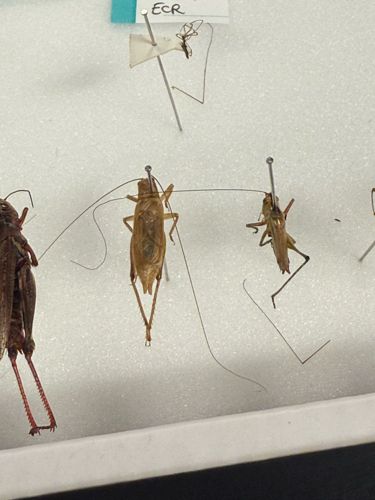Camel Cricket / Cave Cricket / Spider Cricket
Scientific Name: Rhaphidophoridae (family)
Order & Family: Order: Orthoptera, Family: Rhaphidophoridae
Size: Generally 1/2 to 1 1/2 inches (1.2 to 3.8 cm) in body length, excluding their long antennae.

Natural Habitat
Damp, dark environments such as caves, hollow logs, under rocks, basements, crawl spaces, and sheds. They prefer high humidity.
Diet & Feeding
Omnivorous scavengers. They primarily feed on decaying organic matter, fungi, plants, and sometimes smaller insects. In homes, they may feed on fabric, cardboard, or any organic debris.
Behavior Patterns
Nocturnal and solitary. They are characterized by their humpbacked appearance, very long antennae, and powerful jumping legs. Unlike true crickets, they do not chirp. When startled, they jump erratically. They are attracted to moisture and darkness.
Risks & Benefits
Generally harmless to humans, though their presence indoors can be considered a nuisance. They do not bite or transmit diseases. Indoors, they can occasionally damage fabrics or plants if food sources are scarce. In natural ecosystems, they play a role in decomposition as scavengers.
Identified on: 9/19/2025